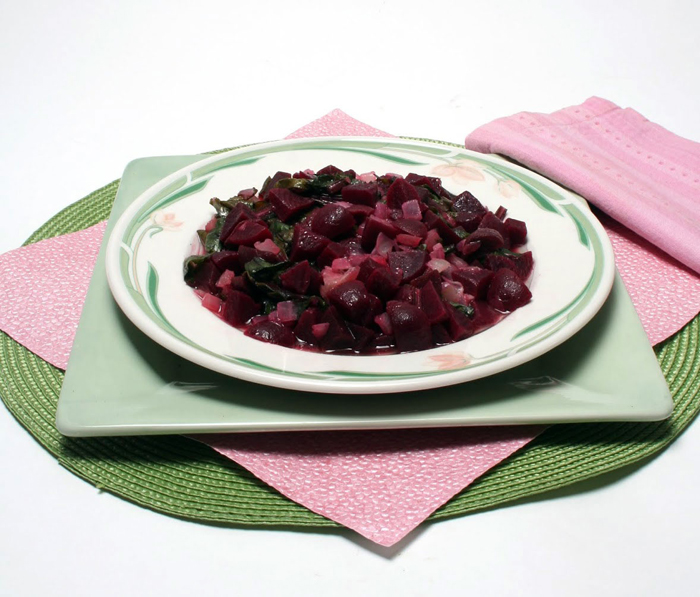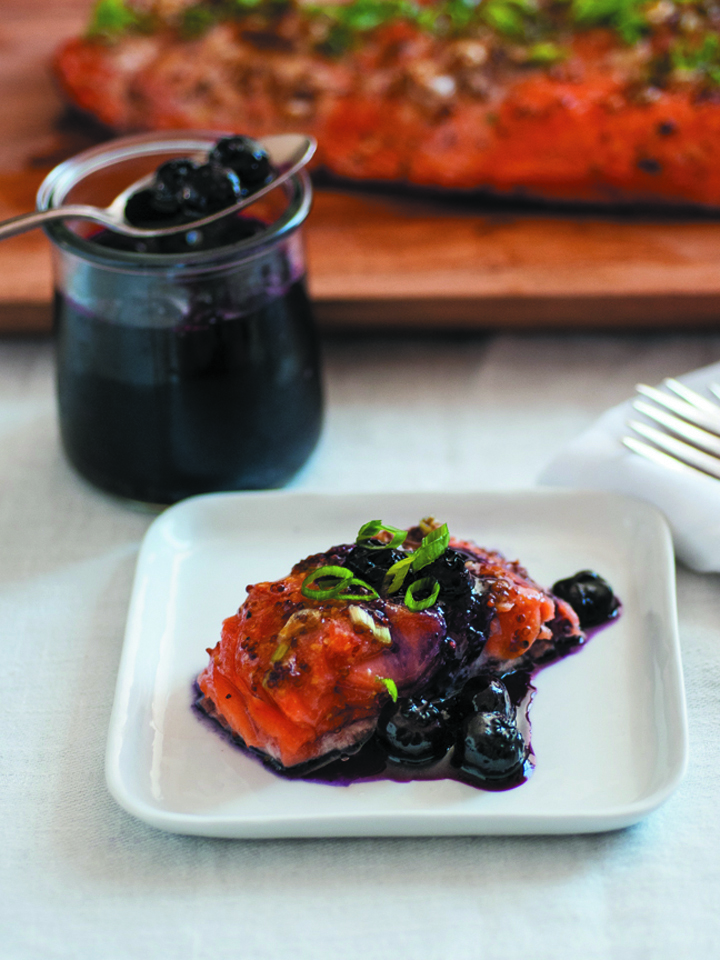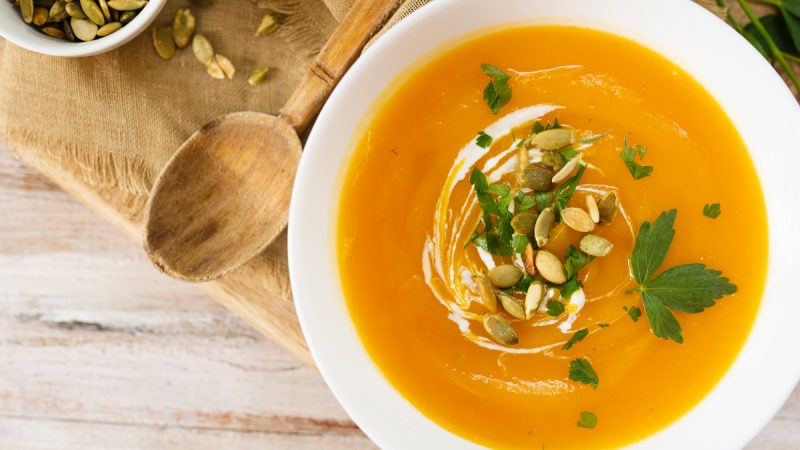Sweet and Sour Beets and Beet Greens

Most everyone loves the combination of the wonderfully contradictory flavors of sweet and sour. Although the sweet-n-sour combo is common in Chinese cuisine, it is also popular in preparing beets. Our jazzed up sweet-n-sour beets include their nutrient-rich leaves too – a sweet deal for more nutrition and color. Vinegar and a minimal amount of brown sugar and whole-wheat flour make for a mouth-watering sauce that you “just can’t beet!”
Cutting beets in half and roasting them instead of boiling accelerates cooking time and amplifies their sweet flavor by caramelizing and concentrating their natural sugars with dry heat. Beets are rich in betalins, which are pigments that give beets their vibrant colors and have antioxidant qualities. Beet leaves are sautéed just until tender to retain heat sensitive nutrients like folate and cancer protective vitamin C. Lutein, a phytochemical that protects eyesight, is abundant in beet greens.
When buying beets look for those that are 2 to 3 inches in diameter, heavy and without cracks, especially around the stems. The stems should be firm and the leaves fresh looking. Skip beets that are too large with dried-out leaves.
Whole-wheat flour does the trick in slightly thickening the sauce. Though beets are naturally sweet, a bit of brown sugar brightens the sour contrast with vinegar. Malt or apple cider vinegar works well, but if you prefer a stronger sour flavor then use malt vinegar, which is made from the maltose sugars in barley, hence the name. Apple cider vinegar is made from cider or apple must (pressed fruit juice, skins, seeds and stems) and is somewhat milder. The sharpness of vinegar’s acetic acid is perfectly tempered with broth to pair with the natural sweetness of the beets and brown sugar.
Sweet and Sour Beets and Beet Greens is a refreshing summer side dish and goes well with most meals. Serve it with grilled or baked chicken, corn on the cob and a simple spinach salad. After just one bite, you won’t have to sweet talk anyone into enjoying the beets.
Sweet and Sour Beets and Beet Greens
Makes 4 servings.
Per serving: 137 calories, 5 g total fat ( 22 g carbohydrate, 3 g protein, 4 g dietary fiber, 123 mg sodium.
Ingredients:
- Canola oil cooking spray
- 5 medium (2-2½-inch fresh beets with leaves)
- 1 tsp. extra virgin olive oil
- 1 Tbsp. canola oil
- 1 large onion (diced)
- 1 Tbsp. whole-wheat flour
- 1 cup non-fat (low-sodium chicken or vegetable broth)
- 2 Tbsp. brown sugar
- 6 Tbsp. apple cider vinegar or malt vinegar
- 1 Tbsp. fresh lemon juice
- Salt and freshly ground black pepper
Directions:
Preheat oven to 425 degrees F. Lightly spray cooking oil on bottom of baking pan.
Cut off leaf stems from beets and set aside. Wash beets with skin on. Cut beets in half. Place cut side down in baking pan. Brush with olive oil. Cover with foil and bake for 30 minutes. Test if tender by piercing with fork. If not tender, roast 10 minutes more and check again. Roasting time will vary depending on size and age of beets. Let beets cool.
While beets are roasting, trim stems from beets leaves and discard. In large bowl, wash beet leaves well and drain in colander. Chop enough leaves into 1/2-inch pieces to firmly pack 1 cup measuring cup and set aside. Save remaining beet greens for another use.
When beets are cool to touch remove outer skin of beets with fingers under running cool water or use paring knife to peel skin. Cut beets into 1/2-inch cubes and set aside.
In large skillet, heat canola oil over medium heat. Sauté onion until translucent and tender, about 5 minutes. Stir in flour and continue cooking about 2 minutes. Slowly stir in broth. Add beet leaves and beets and cook about 4 minutes. Stir in brown sugar, vinegar and lemon juice. Cook for 10 minutes, stirring occasionally. Season with salt and pepper. Serve warm or chilled.
The Author:
The American Institute for Cancer Research (AICR) is the cancer charity that fosters research on the relationship of nutrition, physical activity and weight management to cancer risk, interprets the scientific literature and educates the public about the results. www.aicr.org.








